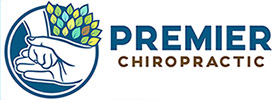That sudden jolt from a car accident, sports injury, or unexpected fall can leave you with more than just an initial shock. In the hours or days following such an incident, you might notice growing discomfort in your neck and shoulders.
While it’s tempting to dismiss these symptoms as temporary soreness, they could indicate whiplash—a condition that requires proper attention and care for optimal recovery. So, in this article, we’re going to take a closer look at whiplash and how chiropractic care can help.
What Is Whiplash?
Whiplash occurs when your head rapidly moves backward and forward, like the cracking of a whip. This sudden movement can strain the complex network of structures in your neck, including vertebrae, nerves, and discs. What makes whiplash particularly challenging is that symptoms might not appear immediately after the incident.
Common symptoms of whiplash include:
- Neck pain that worsens with movement
- Reduced range of motion in the neck
- Headaches, particularly at the base of the skull
- Dizziness and fatigue
- Upper back and shoulder pain
- Tingling or numbness in the arms
- Difficulty concentrating or sleeping
The severity of whiplash can vary significantly depending on factors such as:
- The force of impact
- Your body’s position during the incident
- Your overall health condition
- Previous neck or spine problems
- Age and physical condition
Treatments for Whiplash
There are many ways to ease your pain and feel better. Here’s where you should start:
Heat and Cold Therapy
Alternating between heat and cold applications is a simple yet effective way to manage whiplash-related pain and inflammation. Cold therapy, or cryotherapy, is typically recommended within the first 24 to 48 hours after the injury. Applying an ice pack wrapped in a thin towel to the affected area for 15–20 minutes at a time can help reduce swelling, numb pain receptors, and minimize inflammation. This approach is particularly beneficial immediately following the injury when the body’s inflammatory response is most active.
After the initial phase, heat therapy can be introduced to improve blood circulation, relax tense muscles, and promote healing. Heat increases oxygen and nutrient flow to the injured tissues, aiding in recovery while reducing stiffness and discomfort. Heating pads, warm compresses, or warm showers can be applied for short intervals, typically 15–20 minutes, to avoid overheating or irritation.
Some individuals find that alternating between cold and heat therapy provides the best results, helping to manage both inflammation and muscle stiffness. However, it’s important to avoid applying extreme temperatures directly to the skin and to consult a healthcare professional if pain persists or worsens.
Over-the-Counter Medications
Over-the-counter (OTC) pain relievers, such as ibuprofen (Advil, Motrin) and acetaminophen (Tylenol), can be useful for managing initial pain and inflammation associated with whiplash. Nonsteroidal anti-inflammatory drugs (NSAIDs) like ibuprofen and naproxen (Aleve) help reduce swelling and discomfort by blocking certain chemicals involved in the inflammatory process. Acetaminophen, on the other hand, is effective for pain relief but does not reduce inflammation.
While these medications can offer short-term relief, they should be used cautiously and according to the recommended dosage. Long-term or excessive use of NSAIDs can lead to stomach irritation, ulcers, or kidney issues, while overuse of acetaminophen may pose risks to liver health.
Neck Support
In some cases, temporary neck support, such as a soft cervical collar, may be recommended to help stabilize the injured area and limit excessive movement that could worsen symptoms. This type of support can provide short-term relief by reducing strain on the muscles and ligaments affected by whiplash.
However, prolonged use of neck braces or collars is generally discouraged. Relying too much on external support can lead to muscle weakening, stiffness, and decreased range of motion over time. Instead, healthcare providers often encourage a gradual return to normal neck movement, accompanied by gentle exercises to strengthen the muscles and restore flexibility.
If neck support is used, it should only be for short durations and under medical guidance.
Chiropractic Care
Chiropractic care adjustments can help:
- Reduce inflammation and pain
- Restore proper range of motion
- Address underlying structural issues
- Prevent long-term complications
- Support your body’s natural healing process
Through careful evaluation and targeted treatment, your chiropractor can develop a personalized care plan that addresses your specific symptoms and promotes optimal healing. They can also provide guidance on proper posture and movement patterns to prevent further strain during recovery.
Ready to find relief? Your Spring Hill and Colombia chiropractors are ready to help. Together, we can help you make a full recovery. At Premier Chiropractic, we’re not just dedicated to helping you live a pain-free life but also ensuring pain doesn’t reoccur. Book your appointment today to discover the power of chiropractic care!






